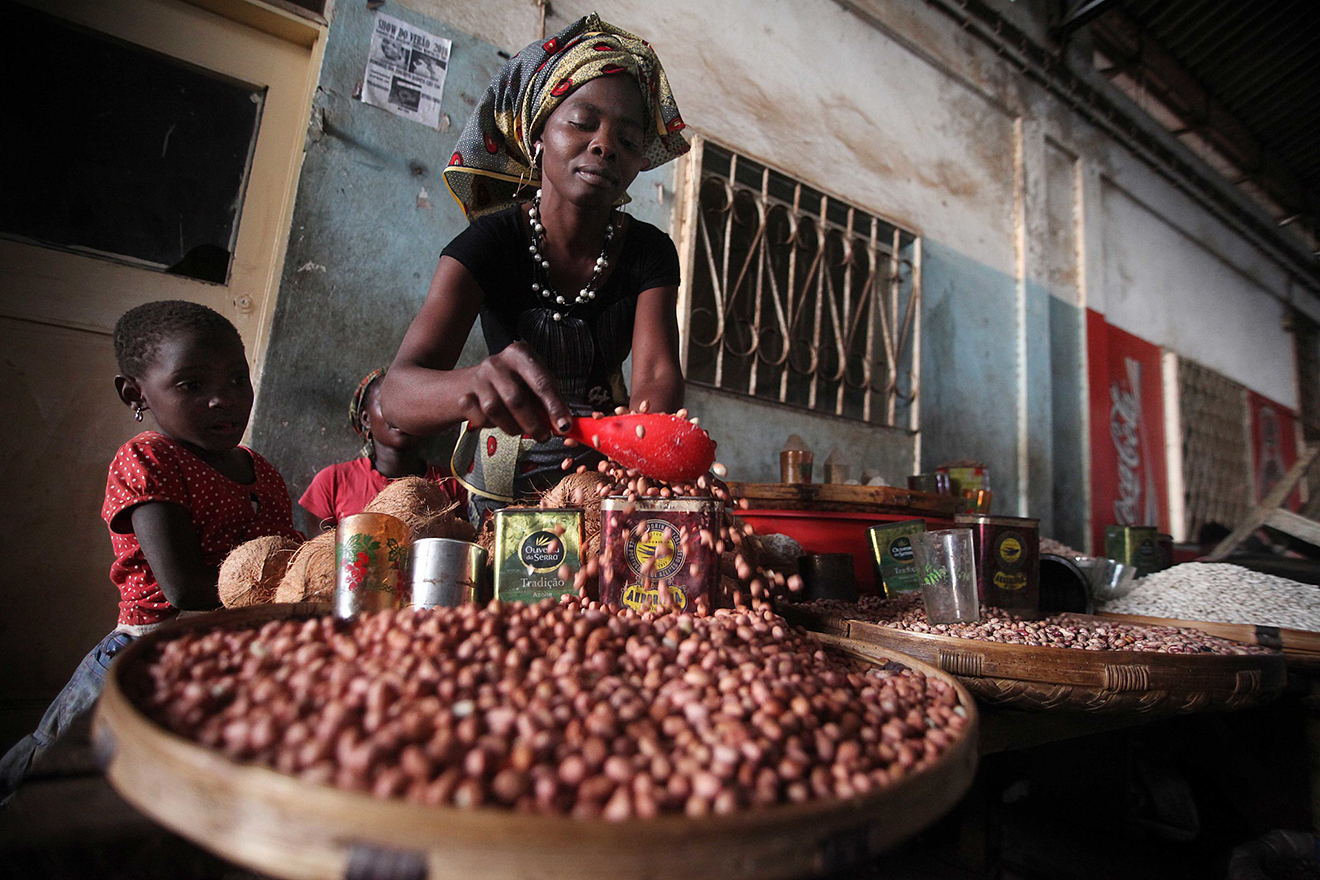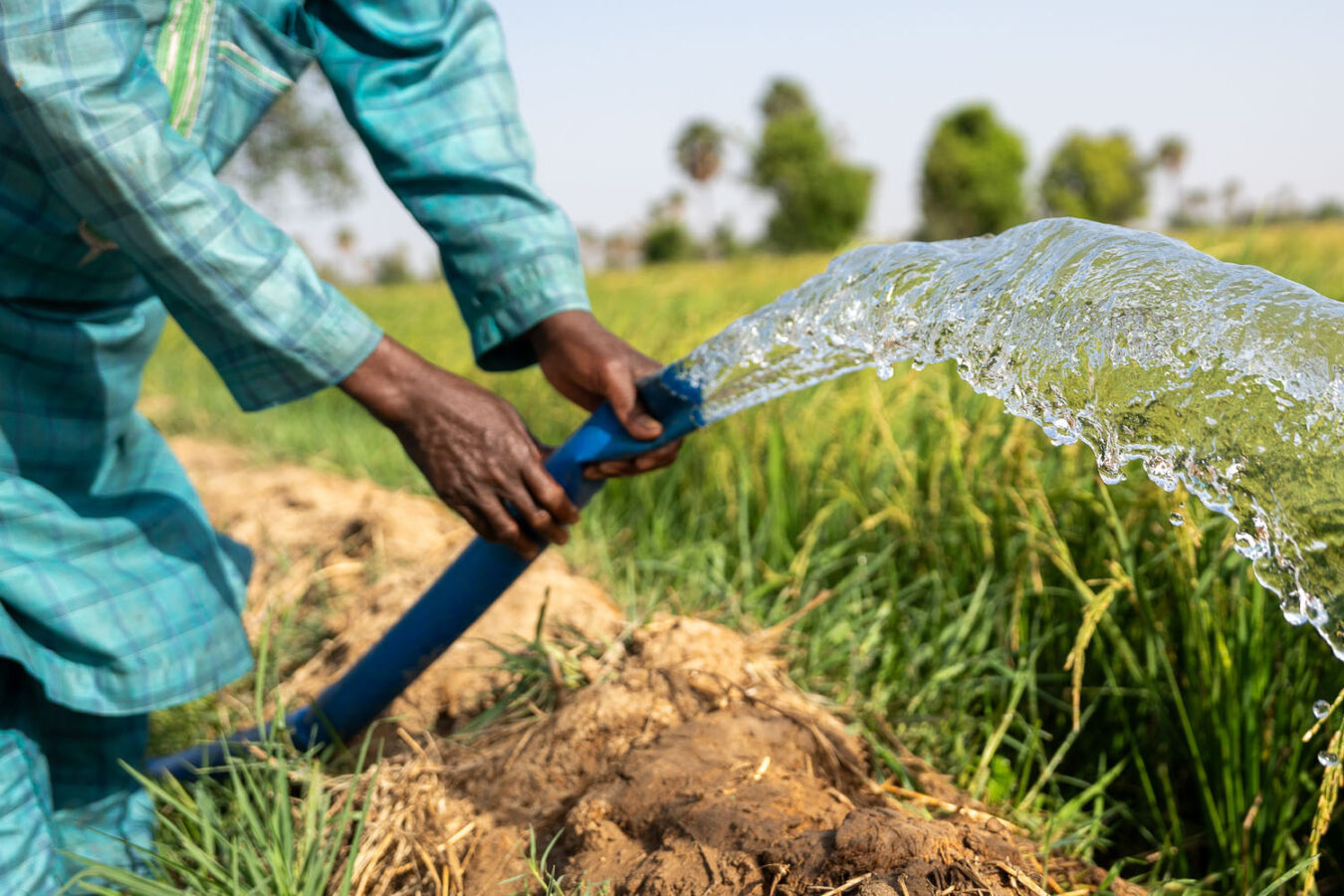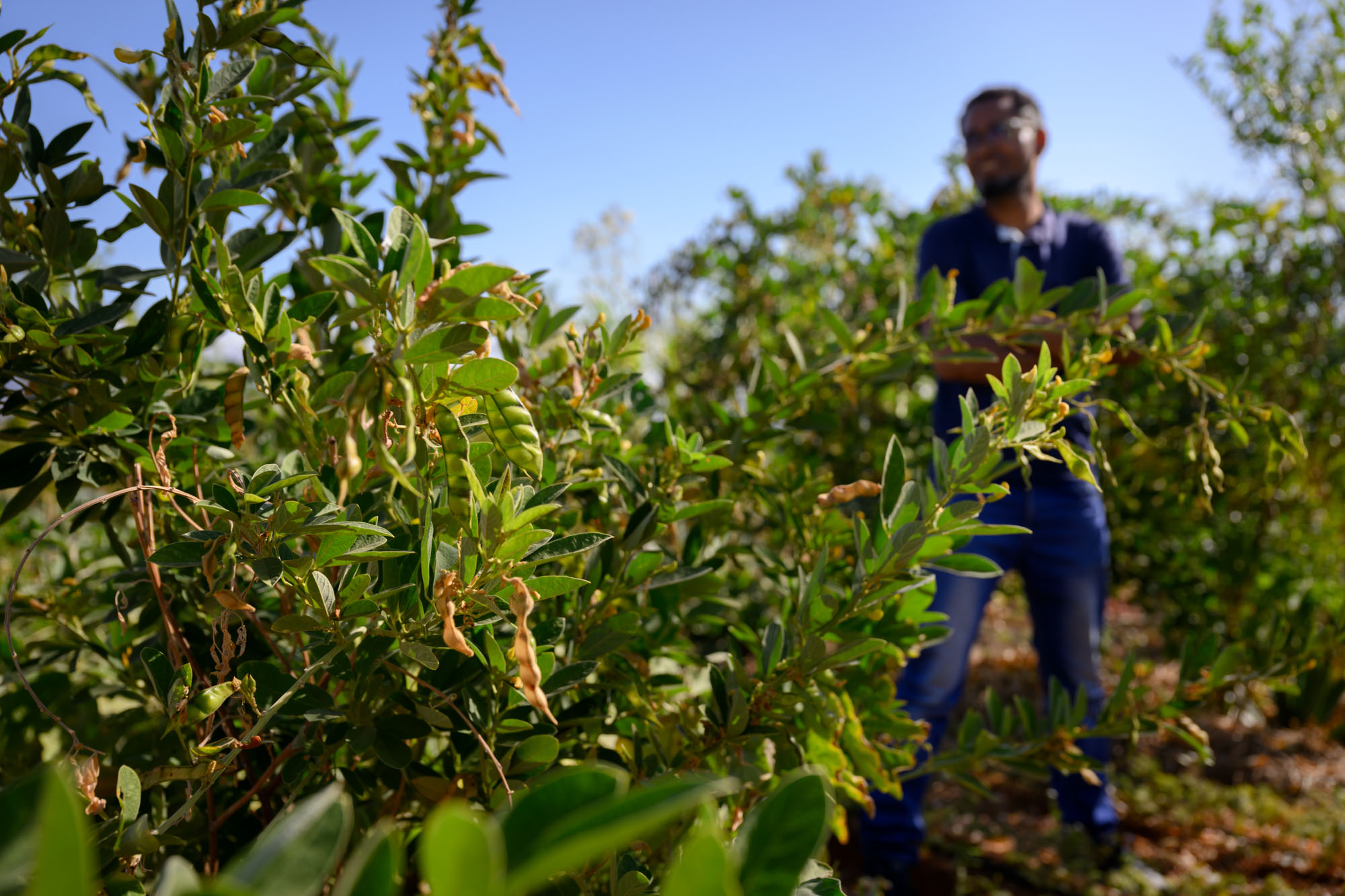Alex Sybron, 33, transitioned from a budding cricket career to becoming the Chief Plant Breeding Officer at Jamaica's Bodles Research Station, focusing on improving seed quality for the agricultural sector. Encouraged by his mother to pursue education after a potential injury, he discovered a passion for plants. Collaborating with the Food and Agriculture Organization of the United Nations (FAO), Sybron’s team works to ensure disease- and pest-free seeds, which are vital for enhancing crop productivity. Jamaican hot peppers, known for their unique heat and flavor, are a primary export, but issues like low seed quality and poor planting practices challenge production. Training sessions for farmers emphasize best practices to improve yield and combat plant diseases.
Agriculture and Food
On International Women's Day, Anta and her friends in Senegal benefit from the Agrijeunes project, developing agribusinesses with IFAD's support, empowering rural youth.
Family farming is crucial for global food security, producing over 80% of the world’s food, with FAO working to strengthen policies and support sustainable agricultural development.
Biodiversity is essential for food security and the environment, involving diverse agricultural practices such as using indigenous seeds, combining crops, and restoring pollinator populations. Our agrifood systems depend on a wide variety of domesticated and wild species, but biodiversity is declining due to factors like land use changes, climate change and over-exploitation. In Luweero District, Uganda, Jane Nakandi Sebyaala, a coffee and banana farmer, leads the Twezimbe Kassala Community Seed Bank, which focuses on preserving indigenous seeds. These seeds can be replanted multiple times and flourish without heavy chemical inputs. Following training by the Food and Agricultutral Organization (FAO), Jane and her community began collecting and planting indigenous seeds, resulting in healthier, more resilient crop yields, particularly maize and beans.
Nino Kavtaradze, a skilled producer of dried fruits, jams, and distinctive Georgian cheeses, has relied on her income to support her health after being diagnosed with cancer nearly 20 years ago. The sales of dried fruits and tklapi [sheets of dried fruit puree which roll up like leather] helped cover her medical expenses while she underwent chemotherapy and managed her home-based business in the northwestern mountains of Georgia. Her resilience led her to become a Lead Farmer in a project aimed at empowering smallholder women dairy farmers. After connecting with a fellow cheese producer involved in a Farmer Field School initiative by the Food and Agriculture Organization (FAO) and UN Women, Nino took on the challenge of recruiting participants. She exceeded expectations by bringing together 30 local women dairy farmers.
In the eastern part of Guyana, near the Corentyne Coast, locals farm endemic brackish water shrimp in constructed ponds that combine freshwater from the Canje River and saltwater from the Atlantic Ocean, enhancing the shrimp's unique flavor. Suedat Persaud, a long-time farmer and founder of the East Berbice-Corentyne Aquaculture Cooperative Society Ltd, notes that farming has become challenging due to climate change, including El Niño and La Niña effects. To address these issues, the Government of Guyana began a project in 2021 aimed at improving livelihoods and shrimp production. Training provided by the Food and Agriculture Organization (FAO) and Guyana's Fisheries Department introduced better management practices. The initiative also promoted mangrove restoration as part of its sustainable development efforts.
For centuries, pulses have been vital to sustainable agriculture and nutrition. These small but impactful crops not only provide essential nutrients but also support healthier diets and resilient farming systems, making them a key source of nourishment even for the most vulnerable communities. To celebrate the importance of these remarkable crops, the World Pulses Day (10 February) underscores the vital role of these foods in promoting diversity – both above and below the ground. Let’s unlock a more sustainable, nutritious and equitable future.
UNOPS has improved food security in Niger by constructing solar-powered irrigation systems, boosting crop yields and supporting economic growth in Sia-Kounza.
Two four-wheel drive vehicles come to a halt on a muddy highway southeast of Monrovia, Liberia. The team of five dressed in fluorescent yellow jackets, comprising statisticians from the Food and Agriculture Organization (FAO) and the Liberia Institute of Statistics and Geo-Information Services (LISGIS), sets out on foot to reach their survey sites. LISGIS team leader Anthony Dymacole notes that accessibility is a major challenge for their work, alongside security roadblocks, flooded bridges, and wildlife encounters. Their efforts support the 50x2030 initiative, which aims to conduct agricultural statistical surveys in 50 countries by the next decade. This initiative emphasizes the critical role of agriculture in generating revenue and employment in low- and middle-income countries.
Khadiga Khanom from Gazipur, Bangladesh, never considered jackfruit significant until she attended workshops on processing various jackfruit products. Inspired by the training provided by the Food and Agriculture Organization (FAO), she started her own business, creating a range of goods such as pickles, jam, burgers, cakes, pizzas, and even plant-based leather. Now processing about 100 kilograms of jackfruit daily with five employees, she earns approximately $400 a month, which helps support her family and allows her to save for business expansion. Jackfruit, Bangladesh's national fruit and a symbol of abundance, has become a pivotal part of her life through the FAO's One Country One Priority Product initiative.
Xie Fanghua noticed the difficulties farmers faced in getting their fruit to market in his mountain community in China and devised a solution with custom designed monorail tracks. With a loan from IFAD, he made the technology available to others.
The UN has proclaimed 2025 as the International Year of Cooperatives with the theme "Cooperatives Build a Better World." Led by the International Cooperative Alliance, the initiative highlights the vital role cooperatives play in tackling global challenges, advancing the Sustainable Development Goals (SDGs), and fostering economic and social inclusion. The year aims to raise awareness, promote cooperative growth, and inspire youth engagement, emphasizing cooperatives' resilience and community-driven impact on poverty reduction and sustainable development.
In the Rusayo camp near Goma, Democratic Republic of the Congo, 32,500 Internally Displaced Persons live in temporary shelters due to ongoing conflict. Just 18 kilometers from the frontline, they endure the sounds of gunfire and explosions, seeking safety for their families. The camp is overcrowded, stretching resources thin and increasing security risks from armed groups. Food insecurity is a pressing issue, prompting support from the Food and Agriculture Organization (FAO), which assists 25,000 vulnerable households in North Kivu and Ituri. FAO provides cash vouchers and resources for micro-gardening and livestock production. These micro-gardening kits enable families to grow vegetables while integrating animal breeding to enhance soil fertility. With access to quality seeds and animals, residents can improve their diets and generate income through selling their produce and animal products.
In Senegal's Bousra Ndawène village, pastoralists from Senegal, Gambia, Mali, and Mauritania travel annually along a 110-km transhumance corridor, seeking fresh pastures for their livestock. Babacar Ndaw, a local farmer and breeder, helps manage resources, balancing the needs of both pastoralists and locals. The Regional Sahel Pastoralism Support Project (PRAPS) has improved infrastructure, animal health services, and water access, reducing conflicts and supporting over 350,000 pastoralists in Senegal. PRAPS aims to assist more than a million pastoralists by 2027, preserving pastoralism while ensuring sustainable resource use.
With IFAD's support, rural farmers in North Africa and the Middle East are improving their marketing skills, boosting incomes, and gaining recognition for their high-quality products.













